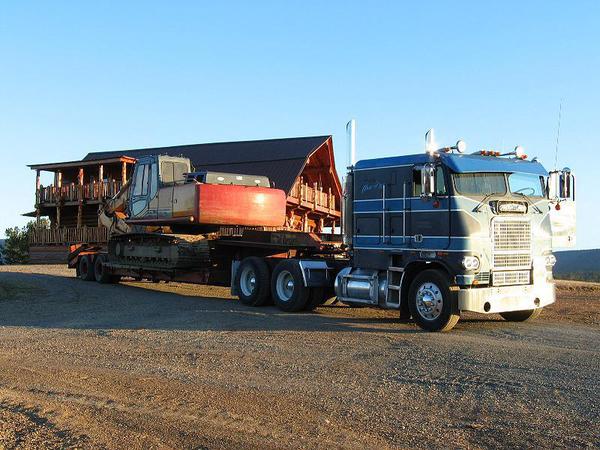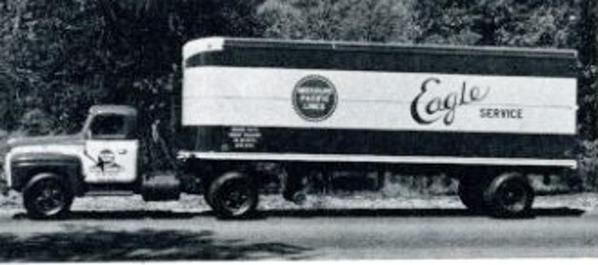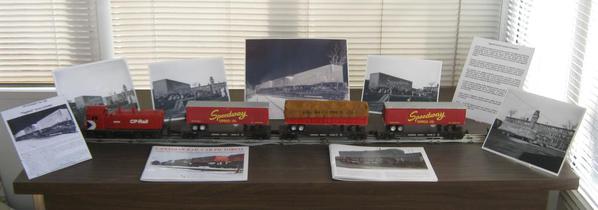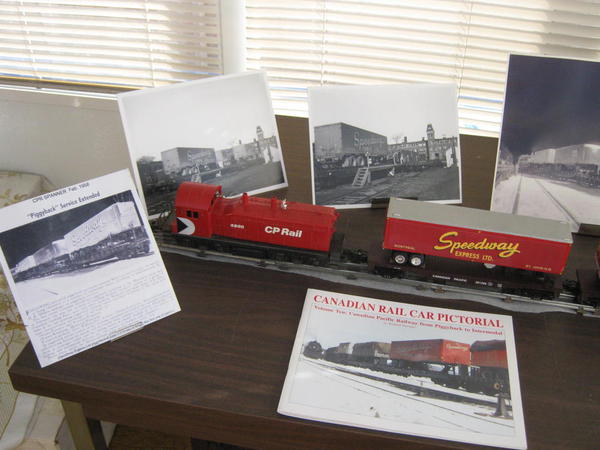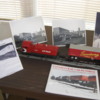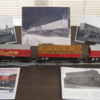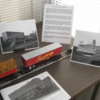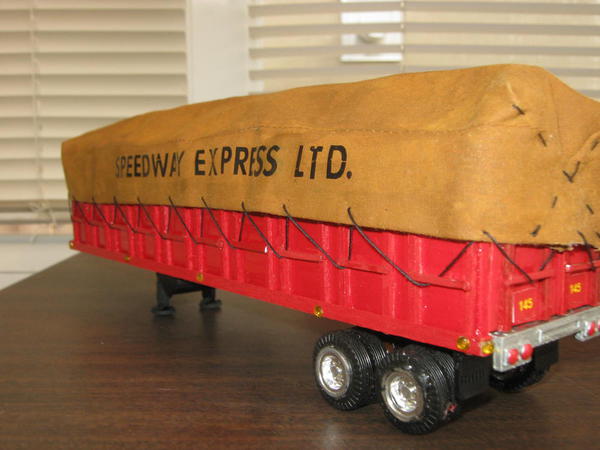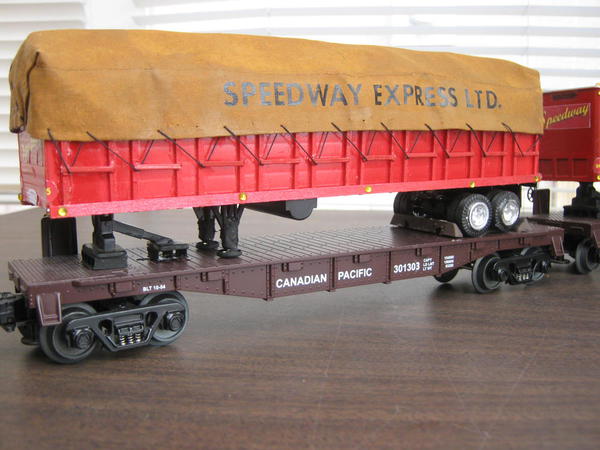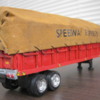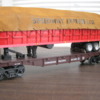TOFC (Trailer on Flat Car), Piggyback, Intermodal, whatever it may be called- this post is bits and pieces from other posts here in one spot. I will make it the next official project for me with high hopes of an ops session at the Rockymountain Train Show on March 7/8.
I do think am getting closer to pulling off that early block of TOFC Piggyback cars I've always wanted to do since I was kid. There is something about those 20'-35' piggyback trailers being pulled by steam and early diesel that makes it so unique.

I know that early TOFC used chains and jacks for loading and later 5th wheel hook up practice and I have plans as time allows between feeding of the baby building these also.
I just love the Lionel PS-4 cars and trailers; brass quality in a plastic and die cast car! Simply marvelous. Weaver cars are not bad either, not as refined however an excellent car . In western railroading we really didn't have solid trains of piggyback in the early 50's. In contrast with purpose built cars the Pennsylvania's unit TrucTrain was the innovator for the time that led us to modern intermodal.
The pioneers such as the North Shore in Chicagoland and Chicago Great Western paved the way for other roads such as the D&RGW in 1940 to begin using TOFC preceding PRR; it was the PRR that pioneered the intermodal unit train of today.
The first goal was to imitate the variety of trailers, length and height and style. This is western piggybacking not unlike the freight trains themselves. We have lost that today with all the unit and standardization. Character is one of the great highlights of early piggyback 1940's-mid-1950's.
Well here we go some notes and photos. I just did a test run of the block in a short consist at Tim's Toy Train's "Rusty spike" in Louisville, Colorado today. In the coming month or so I will provide photos of my mistakes and my goof ups. Hopefully some achievements mixed in.






























































































































































































